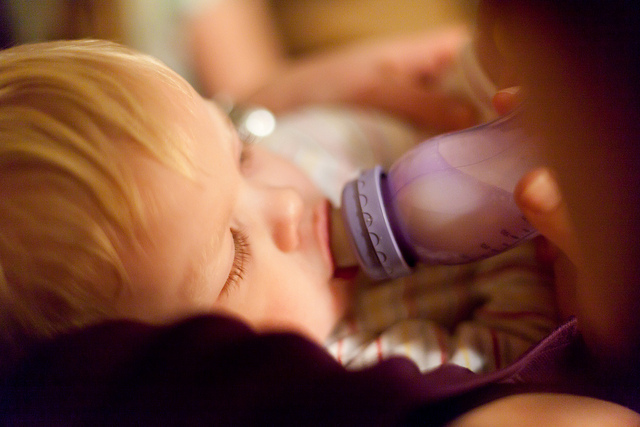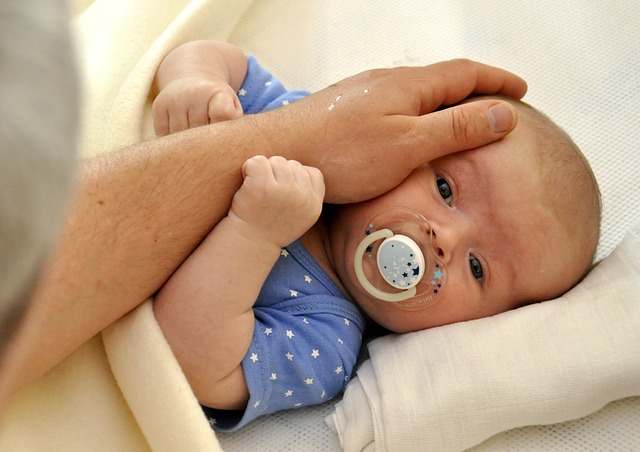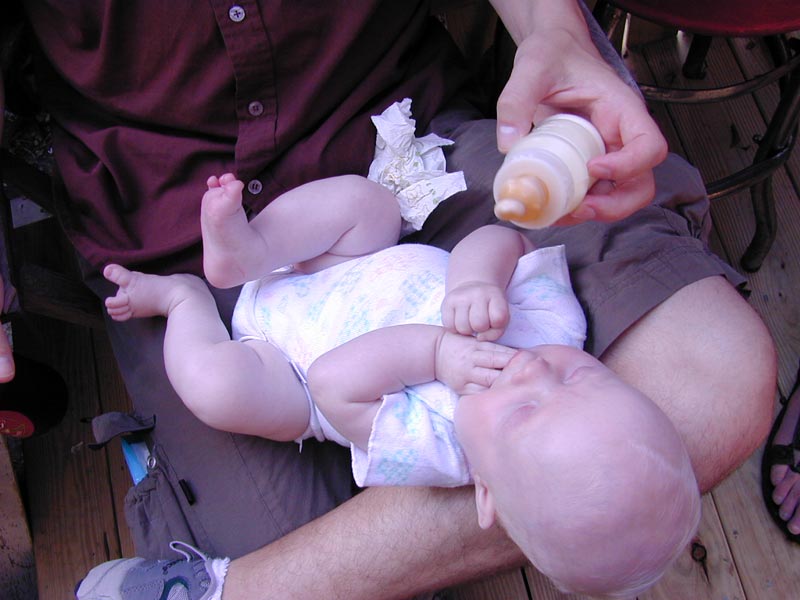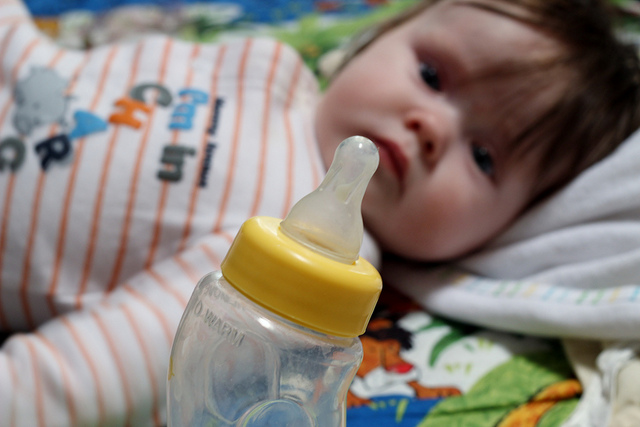
This is the 1st article in a 3 guide series on Best baby bottles for breastfed babies. Following this article, you may want to read How to Choose the Best Bottle for Breastfed babies. Finally, on part 3 we recommend the best bottles for breastfed babies.
In this first part of the series we provide some advice on how and when to introduce your breastfeed baby to the bottle.
Have you established breastfeeding with your newborn and feel you should be considering introducing the bottle? If that’s the case, you are not alone. Many moms are on the same boat when it comes to introducing your breastfed baby to the bottle.
What are the advantages of introducing your breastfed newborn to the bottle?
To have a well-deserved break
We all feel that way, so you are not alone. From time to time would like to get out of the house for a short walk; especially during the first few weeks and if it is difficult to establish lactation.
To separate from your baby for short periods of time
You may need to attend a doctor’s appointment or maybe you’d like to have a quiet diner with your partner while someone else is minding your baby.
It is also a good idea to be ready for any emergencies. If you need to attend any urgent matters and unexpectedly separate from your baby, it will be easier if you know it latches to a bottle.
To separate from your baby for longer periods
This may be your case if you are planning to go back to work soon, so it is understandable you may want to start offering the bottle to your baby.
When is a good time to start introducing your breastfed baby to the bottle?
 Most lactation consultants recommend introducing the bottle or pacifier after lactation has been properly established.
Most lactation consultants recommend introducing the bottle or pacifier after lactation has been properly established.
Every case is different, so it will depend on how you and your baby are tracking. Some babies are born “knowing” exactly how to latch properly to the breast from day one. Others take a bit longer to establish lactation. Generally speaking the estimated time you could start trying offering the bottle is at around 4 to 6 weeks from birth.
It is important to take into consideration that during the first few weeks after your baby is born you need to generate a milk supply. Hence, you will need your baby to stimulate your breasts to build the supply he needs. If you replace a feed with a bottle you will probably need to express milk. If you don’t it could lead to excessive breast engorgement or even mastitis.
We would also like to highlight that if you introduce the bottle too early you could risk your baby preferring the bottle over the breast. Drawing milk from a bottle is much easier than breastfeeding and your newborn may decide that he prefers the easy way. Take your time and introduce the bottle gradually.
9 Tips to introduce your breastfed baby to the bottle
1. Picking the right bottle

This is a really tricky point because some babies accept the first bottle they are offered, whereas some others are exactly the opposite. The later group may need to try every baby bottle in the market until they find the one that is right for them. You may want to check out our list on Best Bottles for Breastfed babies for some advice on how to get started.
2. Get help from Dad (or Grandma)
In some cases it is easier for baby to accept the bottle if you are not around. After all, you are Mom and “The Supplier” of the real thing. Take that well-deserved break and get out of the house while the team experiment bottles with baby. However, don’t go too far just in case your baby goes too hungry and the bottle feeding session is unsuccessful.
3. Calculate the right timing
Wait until next feed to introduce the bottle and don’t try between feeds. You will have better chances of your baby accepting the bottle if he is hungry, but you don’t want to get to the point he is starving as he’ll be too frustrated to cooperate.
4. Consistency
Try to introduce the bottle at the same time every day, so that your baby starts getting used to it as part of his/ her routine. Pick a time that is convenient for you, when neither of you are too tired to give it a try.
5. Be Patient
 It may take time for your baby to accept the bottle, so try not to give up and keep offering the bottle a little bit every day. Try increasing the amount of time you offer the bottle every day, without going to an extreme. If you have been trying for some time and your baby is very upset it may be counterproductive to keep offering the bottle at that stage as he will be really tired, frustrated and hungry.
It may take time for your baby to accept the bottle, so try not to give up and keep offering the bottle a little bit every day. Try increasing the amount of time you offer the bottle every day, without going to an extreme. If you have been trying for some time and your baby is very upset it may be counterproductive to keep offering the bottle at that stage as he will be really tired, frustrated and hungry.
In my personal case, my baby accepted the bottle when she was over 3 months old. We started offering the bottle to her at 2 months but not every day. Maybe if we had been more consistent, she would have accepted it earlier… Anyway, every baby is different and you will have to go through your own journey.
6. Be observant
Try to understand why your baby is not taking the bottle. Always check your milk before you offer it to your baby: smell, aspect and temperature. If unsure, taste it to see if it has a funny flavour. Try to understand if the problem is with the nipple shape or flow.
7. Rub some milk on the bottle nipple
The bottle nipple is harder than the breast so your baby may not like the new texture. Try rubbing some breast milk into it to make it more appealing.
8. Try different positions

The breastfeeding position may not work for the bottle, so don’t be afraid to try different ones such as semi-upright or sitting up (this also helps colic and re flux). You may also want to try a boopy pillow.
9. Try another bottle
After trying with the same bottle for a few days, you may feel the problem is the bottle. If there is a milk overflow and you see your baby is struggling to feed it may be because you are using a fast flow nipple. It could also happen that your baby is getting frustrated because milk takes too long to come out, suggesting you may be using a slow flow nipple. As every baby is different, try all tips mentioned above with different bottles. Remember to be persistent for as long as you can.
How much milk to calculate?

You should talk to your physician or lactation consultant to get the best advice as to how to calculate how much milk to offer your baby.
The way that I used to calculate the amount of milk to offer my baby when she was little was based on a recommendation from her paediatrician. I would feed her 1 ounce of milk for every 2 pounds my baby weighted or 30 ml for every Kilo.
The formula above is only useful as a guide that would apply to an average weight baby. For example: A 3 month old baby weighting 11 pounds would drink 5 ounces of milk (that is 5 kilos and 150 ml). Babies that weight above or below average may need another amount of milk; and babies that have started on solids also need a different amount of milk.
Take your doctor’s advice and pay attention to the amount of milk your baby takes. You will gradually learn how to calculate how much milk to feed your baby according to her needs. If your baby is still hungry after a feed, just offer some more milk and you will gradually get the quantities right.
Was this advice helpful? Have you managed to successfully transition your baby from breast to bottle? Tell us all about it by leaving your comment below.
For more information on this topic, click here to go to part 2 of this series: How to Choose the best bottle for breastfed babies.

